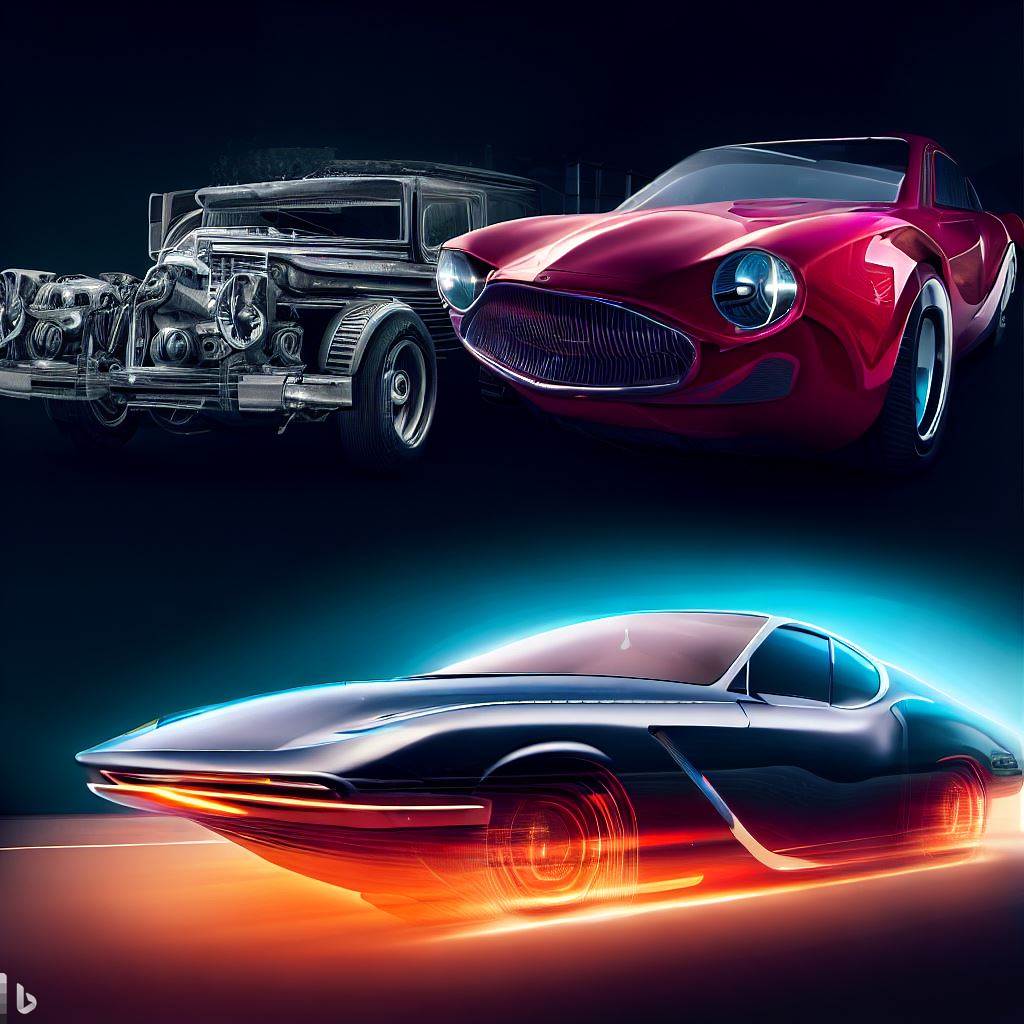
Are you ready to dive into the captivating world of car design and aesthetics?
Get ready to rev up your style game as we take you on a journey through the evolution of automotive artistry.
From the early 1900s to the present day, witness the stunning transformations that have shaped the way we perceive and admire cars.
Buckle up and prepare to be amazed by the innovative designs and the sustainable future of car aesthetics.
Let’s hit the road!
1900s to 1950s: The Birth of Automotive Artistry
You’ve probably never realized just how much creativity and innovation went into the birth of automotive artistry from the 1900s to the 1950s. During this time, the world witnessed a revolution in car design and aesthetics that laid the foundation for the automobiles we see today.
From the sleek lines of the 1930s luxury cars to the iconic fins of the 1950s, every aspect of car design was meticulously crafted to captivate and inspire. Designers pushed the boundaries of what was possible, experimenting with new materials, shapes, and colors. They were visionaries, creating not just transportation, but works of art that stirred emotions and sparked a sense of wonder.
This era marked the beginning of a new era in automotive design, forever changing the way we view cars.
1960s to 1990s: From Muscle Cars to Futuristic Designs
From the 1960s to the 1990s, there was a shift in automotive aesthetics. During this time, muscle cars dominated the roads, captivating car enthusiasts with their powerful engines and aggressive designs. The Mustang, Camaro, and Charger, in particular, became symbols of speed and strength, embodying a rebellious spirit. However, alongside these muscle cars, a new wave of futuristic designs emerged. These designs pushed the boundaries of what a car could look like and captured imaginations. Cars like the DeLorean DMC-12 from ‘Back to the Future’ and the Lamborghini Countach showcased sleek lines, aerodynamic shapes, and innovative features. This era was marked by endless possibilities, where cars transformed into works of art that turned heads wherever they went.
2000s to Present: Embracing Innovation and Sustainability
Since the 2000s, car manufacturers have been embracing innovation and sustainability. They have been incorporating advanced technologies and eco-friendly features into their designs. Today’s cars are not only sleek and stylish, but they are also more environmentally conscious than ever before.
With the rise of electric and hybrid vehicles, car companies are revolutionizing the way we think about transportation. These new cars are equipped with state-of-the-art systems that reduce emissions and promote fuel efficiency. From regenerative braking to solar panels on the roof, every detail is designed to minimize the impact on the environment.
Additionally, car manufacturers are investing in research and development to create more sustainable materials for their vehicles. They are using recycled and renewable resources, which reduces waste and preserves natural resources.
With each passing year, the automotive industry is becoming more committed to sustainability. They are providing stylish and eco-friendly options for your next ride.
Frequently Asked Questions
How Did Advancements in Technology During the 1900s to 1950s Impact Car Design and Aesthetics?
Advancements in technology from the 1900s to 1950s revolutionized car design and aesthetics. These improvements allowed for sleeker, faster, and more efficient vehicles. It was an era of innovation that shaped the future of automotive engineering.
What Were Some of the Key Factors That Influenced the Evolution of Car Design From the 1960s to 1990s?
During the 1960s to 1990s, key factors like technological advancements, changing consumer preferences, and competition among manufacturers influenced the evolution of car design. These factors led to the creation of sleeker, more aerodynamic designs that emphasized speed and style.
How Has the Focus on Sustainability Influenced Car Design and Aesthetics in the 2000s and Beyond?
In the 2000s and beyond, sustainability has had a major impact on car design and aesthetics. Focus on eco-friendly materials, fuel efficiency, and electric power has transformed the way cars look and function.
What Were Some of the Iconic Muscle Cars That Emerged During the 1960s to 1990s Period?
During the 1960s to 1990s, there were several iconic muscle cars that emerged. Some of these included the Ford Mustang, Chevrolet Camaro, Dodge Challenger, and Pontiac GTO. These cars were known for their powerful engines and aggressive designs.
How Have Consumer Preferences and Demands Shaped the Evolution of Car Design and Aesthetics Throughout These Different Time Periods?
Throughout the different time periods, consumer preferences and demands have played a significant role in shaping the evolution of car design and aesthetics. It’s fascinating to see how these factors have influenced the transformation of cars over the years.
Conclusion
So what are you waiting for? It’s time to appreciate the incredible journey of car design and aesthetics.
From the birth of automotive artistry in the early 1900s to the futuristic designs of the 1990s, and now the embrace of innovation and sustainability in the present day. The evolution of car design has been a thrilling ride, showcasing the ingenuity and creativity of designers throughout history.
So next time you see a sleek, beautifully designed car, take a moment to admire the artistry behind it. Get behind the wheel and experience the power and beauty of automotive design for yourself.

